Division of Infectious Diseases
Decisive De-labelling in Cancer Patients: Just what the Doctor Ordered
The following was previously posted by Dr. Marcelin to SHEA Journal Club published online in January 2019.
Although 10% of Americans report penicillin allergies, 90% of those allergies are not substantiated. Up to 25% of patients living with cancer report penicillin allergies, but more than half of these are low risk and could tolerate beta-lactams.
Cancer patients are likely to receive inappropriate antibiotics for a documented penicillin allergy because they are immunocompromised, therefore “special”. Additionally, admission for systemic illness like neutropenic fever, it may not be convenient to schedule penicillin skin testing, and other medications could interfere with skin testing.
Trubiano et al. focused specifically on cancer patients to test the feasibility of implementing an oral penicillin challenge program as a means to de-label inappropriate penicillin allergies in cancer patients. Of 98 patients with low-risk penicillin allergy, only 46 met the inclusion criteria and consented to participate, 23 of whom had either solid-organ or hematological cancer.
The study included inpatient and outpatients. An ID physician performed a detailed history and cleared patients for oral penicillin challenge, in the form of a dose of either penicillin VK or amoxicillin, administered by an antimicrobial stewardship nurse.
All 46 patients tolerated the challenge and were successfully de-labelled. Beta lactams were more likely to be prescribed post challenge than pre challenge. (22/26, 84.6% vs 1/31, 3.2%; P < .001), a difference that remained after stratification for different variations of specific beta-lactams.
Despite the small size of the pilot study, this work is important because most penicillin challenge studies have focused on children and immunocompetent patients. Given the significant use of antibiotics in the cancer population, results like this can inform larger studies, or provide impetus to consider implementation of similar de-labelling programs when skin testing is not available.
Reference: Trubiano, Jason A et al. “The Safety and Efficacy of an Oral Penicillin Challenge Program in Cancer Patients: A Multicenter Pilot Study” Open forum infectious diseases vol. 5,12 ofy306. 17 Nov. 2018, doi:10.1093/ofid/ofy306
SeptiCyte: Is It Ready for Prime-time?
The following is a summary of a recent ID Journal Club, presented and written by 2nd year ID Fellow Dr. Raj Karnatak:
Sepsis defined as “life-threatening organ dysfunction due to the dysregulated host response to an infection” [1]. Sepsis most commonly results from a bacterial infection, or less frequently from a fungal or viral infection. Sepsis is the most expensive condition treated in US hospitals with an aggregate cost of 23.7 billion US dollars annually [2]. The global burden of sepsis is estimated to be up to 30 million people every year, causing up to 6 million deaths [3]. The Surviving Sepsis campaign recommend administration of effective antimicrobial therapy within one hour of identification of sepsis. Unfortunately, signs and symptoms of sepsis are non-specific, and early identification of sepsis remains to be a challenge.
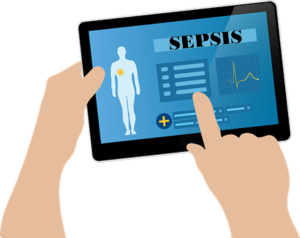 A delay in the administration of effective antimicrobial therapy can lead to significantly increased mortality [4]. Due to the rapid progression to life-threatening organ dysfunction or death, antimicrobials are liberally administered in all suspected cases of sepsis. Unfortunately, this practice may contribute to the development of antimicrobial resistance. The Centers for Disease Control and Prevention (CDC) estimate at least 2 million people get an antibiotic-resistant bacterial infection each year and lead to a minimum 23,000 deaths. Unfortunately, traditional culture methods to identify micro-organisms are time-consuming and are not as helpful in the early identification of sepsis. Most recently, significant strides have been made with newer rapid diagnostic methods, but early and accurate identification of sepsis remains challenging.
A delay in the administration of effective antimicrobial therapy can lead to significantly increased mortality [4]. Due to the rapid progression to life-threatening organ dysfunction or death, antimicrobials are liberally administered in all suspected cases of sepsis. Unfortunately, this practice may contribute to the development of antimicrobial resistance. The Centers for Disease Control and Prevention (CDC) estimate at least 2 million people get an antibiotic-resistant bacterial infection each year and lead to a minimum 23,000 deaths. Unfortunately, traditional culture methods to identify micro-organisms are time-consuming and are not as helpful in the early identification of sepsis. Most recently, significant strides have been made with newer rapid diagnostic methods, but early and accurate identification of sepsis remains challenging.
A recent study published in the American Journal of Respiratory and Critical Care “Validation of a Host Response Assay, SeptiCyte LAB, for Discriminating Sepsis from Systemic Inflammatory Response Syndrome in the ICU” used a novel method for the early identification of sepsis [5]. The SeptiCyte lab is a host response assay that quantifies expression of 4 major genes (CEACAM4, LAMP1, PLAC8, PLA2G7) for the early identification of sepsis. This article combined findings obtained from 3 prospective observational studies and included a total of 447 patients from 7 sites in the United States and one site in the Netherlands. The primary objective of this study was to establish performances of the SeptiCyte test for the correct identification of sepsis from a non-infectious SIRS either as a stand-alone test or in combination with other clinical variables. The investigators used real-time, reverse-transcription, quantitative polymerase chain reaction (RT-qPCR) to measure sepsis gene expression after the extraction of mRNA from blood samples obtained from patients with suspected sepsis. After extraction of m-RNA, RT-qPCR provided a quantitative score (SeptiCyte score). In this study, the binary cutoff value for SeptiCyte score was 3.1: a value 3.1 or above was consistent with sepsis and a score of less than 3.1 was designated as non-infectious SIRS (systemic inflammatory syndrome).
The SeptiCyte test was evaluated in three different sepsis physician diagnosis groups (unanimous, consensus and forced). The ability of the Septicyte test to differentiate between sepsis and non-infectious SIRS was compared with other clinical variables such as procalcitonin, WBC count, mean arterial pressure, core temperature, and number of other SIRS criteria. Interestingly, SeptiCyte was found to be most accurate in differentiating between sepsis and non-infectious SIRS. SeptiCyte showed highest area under the receiver-operator curve (AUC), between 0.82 to 0.89. The procalcitonin AUC was 0.80 and AUC for other individual variables fell below 0.67. Notably, SeptiCyte correctly identified 100% of blood culture positive sepsis cases. The diagnostic performance of SeptiCyte only slightly increased in combination with procalcitonin. Combination of other clinical variables did not add up to further increase in AUC.
 Although this study showed SeptiCyte could accurately differentiate between infectious and non-infectious causes of SIRS, the assay has several weaknesses. First, the SeptiCyte assay took 6 hours to result, so it would likely not be more useful in sepsis identification than some newer and emerging rapid diagnostic tests; therefore the cost-effectiveness to clinical utility balance is yet to be determined. Additionally, the study included patients with SIRS and only included patients already in the ICU, when the emergency department may be the first point of initiation of any institutional sepsis protocol. Finally, the test performance was lowest with pneumonia, which is one of the the most common causes of sepsis in the ICU, again questioning the clinical utility. Other questions remain such as whether this technology would have a role in out-of-hospital sepsis bundle initiation.
Although this study showed SeptiCyte could accurately differentiate between infectious and non-infectious causes of SIRS, the assay has several weaknesses. First, the SeptiCyte assay took 6 hours to result, so it would likely not be more useful in sepsis identification than some newer and emerging rapid diagnostic tests; therefore the cost-effectiveness to clinical utility balance is yet to be determined. Additionally, the study included patients with SIRS and only included patients already in the ICU, when the emergency department may be the first point of initiation of any institutional sepsis protocol. Finally, the test performance was lowest with pneumonia, which is one of the the most common causes of sepsis in the ICU, again questioning the clinical utility. Other questions remain such as whether this technology would have a role in out-of-hospital sepsis bundle initiation.
The SeptiCyte assay was approved by FDA in Feb 2017 as an indication for sepsis diagnosis in ICU patients, and efforts are being made to reduce test result time within 90 minutes. It will be interesting to see how SeptiCyte performance compares with other new and emerging rapid diagnostic tests to identify micro-organism directly from a blood samples.
References:
- Singer M, Deutschman CS, Seymour CW, et al. The Third International Consensus Definitions for Sepsis and Septic Shock (Sepsis-3). JAMA. 2016;315(8):801–810. doi:10.1001/jama.2016.0287
- Torio CM, Moore BJ. National Inpatient Hospital Costs: The Most Expensive Conditions by Payer, 2013.
- Fleischmann C, Scherag A, Adhikari NK, et al. Assessment of Global Incidence and Mortality of Hospital-treated Sepsis. Current Estimates and Limitations. Am J Respir Crit Care Med 2016; 193(3): 259-72.
- Kumar A, Roberts D, Wood KE, et al. Duration of hypotension before initiation of effective antimicrobial therapy is the critical determinant of survival in human septic shock. Crit Care Med. 2006;34(6):1589-1596.
- Miller, Lopansri, Burke, et al.: Validation of SeptiCyte LAB Test for Sepsis. Am J Respir Crit Care Med Vol 198, Iss 7, pp 903–913, Oct 1, 2018

Technology vs. Humans: Role of Rapid Diagnostics and Antimicrobial Stewardship in Cancer Patients
Rapid diagnostic testing (RDTs) plays an important role in Antimicrobial Stewardship Programs (ASP) and highlights the impact of the Microbiology laboratory on reducing inappropriate antibiotic use, particularly in hospitalized patients. Early microbial identification with RDTs can lead to earlier initiation of targeted antimicrobial therapy, which can in turn result in shorter hospitalization, fewer adverse events and reduced C. difficile infections. Other studies have shown that while implementation of RDTs improves outcomes, coupling RDT implementation with ASP increases the impact on clinical care. However, there is still a dearth of published studies relating to ASP in the context of the unique group of immunocompromised patients. This review described a recently published study evaluating the impact of rapid diagnostic testing on Antimicrobial Stewardship in this patient population.
This single center study in adults admitted to a cancer hospital had a pre-post intervention design, with two intervention arms – implementation of Biofire® Blood Culture ID (BCID) testing to positive blood cultures, and BCID + ASP review (implemented two years after the initial BCID intervention). Addition of BCID led to more appropriate antimicrobial therapy and reduced time to appropriate therapy. Further addition of ASP review two years after BCID implementation did not provide statistically significant benefit, however, advanced regression analysis of predicted time to appropriate antibiotic therapy from Gram stain showed that compared to the pre-intervention cohort (38.1hrs), this time decreased to 13.1hrs for the BCID group and 8.3hrs for the BCID+ASP group (P=0.02). Studies in the non-cancer population have shown significant benefit from including ASP with implementation of rapid diagnostic testing for bloodstream infections; in this study however, two years after BCID implementation, clinician familiarity with the rapid diagnostic test may have affected the impact of adding ASP review to the process. This is a small study with a somewhat heterogeneous niche population of immunocompromised patients; a larger study could potentially produce more significant results, address effect of culture/attitudes to de-escalation for neutropenic fever, and highlight where ASP should be allocated in specific patient populations where resources may be limited.
The preceding was previously posted by Dr. Marcelin to SHEA Journal Club published online in December 2018.
Citation
Brian A Buss, et al. Impact of a Multiplex PCR Assay for Bloodstream Infections With and Without Antimicrobial Stewardship Intervention at a Cancer Hospital, Open Forum Infectious Diseases, Volume 5, Issue 10, 1 October 2018, ofy258, https://doi.org/10.1093/ofid/ofy258
Happy Holidays!
As the holiday season comes to a close, we here at UNMC ID want to wish each and everyone of you a happy, healthy holiday season and a wonderful start to 2019!
Thank you for your continued support in our endeavor to bring you the latest news, updates and research from our amazing faculty & the world of Infectious Diseases.
If you are interested in specific future topics, please let us know so we can work to add this into our 2019 calendar.
Happy Holidays everyone!
Farewell to 2018; a year of UNMC ID growth
2018 has been a year of growth for our Division of Infectious Diseases. We have added several new faculty to our group (and still actively hiring), continued to redesign the College of Medicine Infectious Diseases curriculum, established a new Orthopedic Infectious Diseases service line, expanded our social media presence, joined multiple national Infectious Diseases committees, and hosted two successful regional conferences.
Amidst all of that, our faculty also published 80 peer-reviewed journal articles crossing several areas of expertise, including HIV, Biopreparedness, Infections in Solid-organ and Stem-cell transplant patients, Antimicrobial stewardship, Hospital Epidemiology & Infection Control, and Infections in critically-ill patients. Curious about the depth and breadth of expertise at UNMC ID? Below is a full list of the publications for your perusal, with convenient links to the referenced articles. It’s long, so consider bookmarking and keep referring to it whenever you need a bit of expertise.
We want to thank Librarian Teresa Hartman at the UNMC McGoogan Library for helping us compile this list of publications.
Stay tuned to our blog and follow us on Twitter @UNMC_ID to see all that we have in store for 2019!
2018 UNMC ID Faculty Publications
- Aboltins, C.A., Anemuller, R., Belden, K., Brause, B., Citak, M., Del Pozo, J.L., Frommelt, L., Gehrke, T., Hewlett, A., et. al. (2018), “Hip and Knee Section, Treatment, Antimicrobials: Proceedings of International Consensus on Orthopedic Infections“, The Journal of arthroplasty,
- Bares, S.H., Smeaton, L.M., Xu, A., Godfrey, C. and McComsey, G.A. (2018), “HIV-Infected Women Gain More Weight than HIV-Infected Men Following the Initiation of Antiretroviral Therapy“, Journal of Women’s Health, Vol. 27, No. 9, pp. 1162-1169.
- Bares, S.H., Swindells, S., Havens, J.P., Fitzgerald, A., Grant, B.K. and Nickol, D.R. (2018), “Implementation of an HIV clinic-based interprofessional education curriculum for nursing, medical and pharmacy students“, Journal of Interprofessional Education and Practice, Vol. 11, pp. 37-42.
- Beam, E.L., Hotchkiss, E.L., Gibbs, S.G., Hewlett, A.L., Iwen, P.C., Nuss, S.L. and Smith, P.W. (2018), “Observed variation in N95 respirator use by nurses demonstrating isolation care“, American Journal of Infection Control, Vol. 46, No. 5, pp. 579-580.
- Bhinderwala, F., Lonergan, S., Woods, J., Zhou, C., Fey, P.D. and Powers, R. (2018), “Expanding the Coverage of the Metabolome with Nitrogen-Based NMR“, Analytical Chemistry, Vol. 90, No. 7, pp. 4521-4528.
- Bolze, A., Boisson, B., Bosch, B., Antipenko, A., Bouaziz, M., Sackstein, P., Chaker-Margot, M., Barlogis, V., Briggs, T., Colino, E., Elmore, A.C., Fischer, A., Genel, F., Hewlett, A., et. al. (2018), “Incomplete penetrance for isolated congenital asplenia in humans with mutations in translated and untranslated RPSA exons“, Proceedings of the National Academy of Sciences of the United States of America, Vol. 115, No. 34, pp. E8007-E8016.
- Brett-Major, D. and Lawler, J. (2018), “Catching chances: The movement to be on the ground and research ready before an outbreak“, Viruses, Vol. 10, No. 8.
- Broekhuis, J.M., Scarsi, K.K., Sayles, H.R., Klepser, D.G., Havens, J.P., Swindells, S. and Bares, S.H. (2018), “Midwest pharmacists’ familiarity, experience, and willingness to provide pre-exposure prophylaxis (PrEP) for HIV“, PLoS ONE, Vol. 13, No. 11.
- Calabro, F., Coen, M., Franceschini, M., Franco-Cendejas, R., Hewlett, A., Segreti, J. and Senneville, E. (2018), “Hip and Knee Section, Treatment, Antimicrobial Suppression: Proceedings of International Consensus on Orthopedic Infections“, The Journal of arthroplasty, .
- Cawcutt, K.A. (2018), “Shifting the Paradigm: Preventing More Than Infection“, Infection Control and Hospital Epidemiology, Vol. 39, No. 6, pp. 644-646.
- Challagundla, L., Luo, X., Tickler, I.A., Didelot, X., Coleman, D.C., Shore, A.C., Coombs, G.W., Sordelli, D.O., Brown, E.L., Skov, R., Larsen, A.R., Reyes, J., Robledo, I.E., Vazquez, G.J., Rivera, R., Fey, P.D., et. al. (2018), “Range expansion and the origin of USA300 north american epidemic methicillin-resistant Staphylococcus aureus“, mBio, Vol. 9, No. 1.
- Choi, S.R., Britigan, B.E., Switzer, B., Hoke, T., Moran, D. and Narayanasamy, P. (2018), “In Vitro Efficacy of Free and Nanoparticle Formulations of Gallium(III) meso-Tetraphenylporphyrine against Mycobacterium avium and Mycobacterium abscessus and Gallium Biodistribution in Mice“, Molecular pharmaceutics, Vol. 15, No. 3, pp. 1215-1225.
- Cirrincione, L.R., Penchala, S.D., Scarsi, K.K., Podany, A.T., et. al. (2018), “Development, validation and utilization of a highly sensitive LC-MS/MS method for quantification of levonorgestrel released from a subdermal implant in human plasma“, Journal of Chromatography B: Analytical Technologies in the Biomedical and Life Sciences, Vol. 1084, pp. 106-112.
- Crews, N.R., Cawcutt, K.A., Pritt, B.S., Patel, R. and Virk, A. (2018), “Diagnostic approach for classic compared with localized whipple disease“, Open Forum Infectious Diseases, Vol. 5, No. 7.
- Donovan, J., Sullivan, K., Wilkin, A., Fadul, N., Heine, A., Keller, J., LeViere, A. and Quinlivan, E.B. (2018), “Past Care Predicts Future Care in Out-of-Care People Living with HIV: Results of a Clinic-Based Retention-in-Care Intervention in North Carolina“, AIDS and Behavior, Vol. 22, No. 8, pp. 2687-2697.
- Duplessis, C., Gregory, M., Frey, K., Bell, M., Truong, L., Schully, K., Lawler, J., et. al. (2018), “Evaluating the discriminating capacity of cell death (apoptotic) biomarkers in sepsis“, Journal of Intensive Care, Vol. 6, No. 1.
- Dyavar, S.R., Ye, Z., Byrareddy, S.N., Scarsi, K.K., Winchester, L.C., Weinhold, J.A., Fletcher, C.V. and Podany, A.T. (2018), “Normalization of cell associated antiretroviral drug concentrations with a novel RPP30 droplet digital PCR assay“, Scientific reports, Vol. 8, No. 1, pp. 3626-018-21882-0.
- Fadul, N., Willis, S.J., Donovan, J., Wilkin, A., Durr Heine, A., LeViere, A., Dortche, C. and Quinlivan, E.B. (2018), “Characteristics of Out-of-Care Patients Who Required a Referral for Re-engagement Services by Public Health Bridge Counselors Following a Brief Clinic-Based Retention Intervention“, AIDS and Behavior, , pp. 1-9.
- Fischer, W.A.,2nd, Vetter, P., Bausch, D.G., Burgess, T., Davey, R.T.,Jr, Fowler, R., Hayden, F.G., Jahrling, P.B., Kalil, A.C., et. al. (2018), “Ebola virus disease: an update on post-exposure prophylaxis“, The Lancet Infectious Diseases, Vol. 18, No. 6, pp. e183-e192.
- Flexner, C., Thomas, D.L. and Swindells, S. (2019), “Creating demand for long-acting formulations for the treatment and prevention of HIV, tuberculosis, and viral hepatitis“, Current opinion in HIV and AIDS, Vol. 14, No. 1, pp. 13-20.
- Furl, R., Watanabe-Galloway, S., Lyden, E. and Swindells, S. (2018), “Determinants of facilitated health insurance enrollment for patients with HIV disease, and impact of insurance enrollment on targeted health outcomes“, BMC Infectious Diseases, Vol. 18, No. 1.
- Galla, K.M., Cameron-Smith, E., Bares, S.H., Braun, A., Punsoni, M., Foster, K., Helvey, J. and Kedar, S. (2018), “Teaching NeuroImages: Presentation of diffuse large B-cell lymphoma with bilateral sequential oculomotor neuropathy“, Neurology, Vol. 91, No. 1, pp. e92-e93.
- Gondolesi, G.E., Fernandez, A., Burghardt, K.M., Nowakowski, S., Kaufman, S.S., Pascher, A., Florescu, D., et. al. (2018), “Meeting Report of the XIV International Small Bowel Transplant Symposium: Summary of Presentations, Workshops, and Debates From a Comprehensive Meeting on Intestinal Failure, Rehabilitation, and Transplantation, Buenos Aires, Argentina, June 10–13, 2015“, Journal of Parenteral and Enteral Nutrition, Vol. 42, No. 2, pp. 477-489.
- Goss, C.H., Kaneko, Y., Khuu, L., Anderson, G.D., Ravishankar, S., Aitken, M.L., Lechtzin, N., Zhou, G., Czyz, D.M., McLean, K., Olakanmi, O., Shuman, H.A., Teresi, M., Wilhelm, E., Caldwell, E., Salipante, S.J., Hornick, D.B., Siehnel, R.J., Becker, L., Britigan, B.E. and Singh, P.K. (2018), “Gallium disrupts bacterial iron metabolism and has therapeutic effects in mice and humans with lung infections“, Science Translational Medicine, Vol. 10, No. 460.
- Guzman, L., Qiu, F., Kalil, A.C., Mercer, D.F., Langnas, A. and Florescu, D.F. (2018), “Risk factors for Clostridium difficile infection in intestinal transplant recipients during the first year post-transplant“, Transplant Infectious Disease, Vol. 20, No. 2.
- Herstein, J.J., Biddinger, P.D., Gibbs, S.G., Le, A.B., Jelden, K.C., Hewlett, A.L. and Lowe, J.J. (2018), “Personnel Management and Biosecurity of U.S. High-Level Isolation Units“, Journal of Nursing Administration, Vol. 48, No. 11, pp. 553-560.
- Herstein, J.J., Biddinger, P.D., Gibbs, S.G., Le, A.B., Jelden, K.C., Hewlett, A.L. and Lowe, J.J. (2018), “US State Public Health Departments Special Pathogen Planning“, Journal of Public Health Management and Practice, Vol. 24, No. 5, pp. E28-E33.
- Herstein, J.J., Iwen, P.C., Jelden, K.C., Biddinger, P.D., Gibbs, S.G., Le, A.B., Hewlett, A.L. and Lowe, J.J. (2018), “U.S. High-Level Isolation Unit Clinical Laboratory Capabilities Update“, Journal of clinical microbiology, Vol. 56, No. 2, pp. 10.1128/JCM.01608-17. Print 2018 Feb.
- Hewlett, A.L., Hohenberger, H., Murphy, C.N., Helget, L., Hausmann, H., Lyden, E., Fey, P.D. and Hicks, R. (2018), “Evaluation of the bacterial burden of gel nails, standard nail polish, and natural nails on the hands of health care workers“, American Journal of Infection Control, Vol. 46, No. 12, pp. 1356-1359.
- Hines, A.G., Freifeld, A., Zhao, X., Berry, A.A., Willett, L., Iwen, P.C. and Simonsen, K.A. (2018), “Clostridium difficile stool shedding in infants hospitalized in two neonatal intensive care units is lower than previous point prevalence estimates using molecular diagnostic methods“, BMC Pediatrics, Vol. 18, No. 1.
- Holland, T.L., Raad, I., Boucher, H.W., Anderson, D.J., Cosgrove, S.E., Aycock, P.S., Baddley, J.W., Chaftari, A.M., Chow, S.C., Chu, V.H., Carugati, M., Cook, P., Corey, G.R., Crowley, A.L., Daly, J., Gu, J., Hachem, R., Horton, J., Jenkins, T.C., Levine, D., Miro, J.M., Pericas, J.M., Riska, P., Rubin, Z., Rupp, M.E., Schrank, J.,Jr, Sims, M., Wray, D., Zervos, M., Fowler, V.G.,Jr and Staphylococcal Bacteremia Investigators (2018), “Effect of Algorithm-Based Therapy vs Usual Care on Clinical Success and Serious Adverse Events in Patients with Staphylococcal Bacteremia: A Randomized Clinical Trial“, Jama, Vol. 320, No. 12, pp. 1249-1258.
- Kalil, A.C., Gilbert, D.N., Winslow, D.L., Masur, H. and Klompas, M. (2018), “Infectious Diseases Society of America (IDSA) POSITION STATEMENT: Why IDSA Did Not Endorse the Surviving Sepsis Campaign Guidelines“, Clinical Infectious Diseases, Vol. 66, No. 10, pp. 1631-1635.
- Kalil, A.C., Gilbert, D.N., Winslow, D.L., Masur, H. and Klompas, M. (2018), “Reply to Al-Hasan and Justo“, Clinical infectious diseases : an official publication of the Infectious Diseases Society of America .
- Kalil, A.C. and Klompas, M. (2018), “Ceftazidime-avibactam versus meropenem for the treatment of nosocomial pneumonia“, The Lancet Infectious Diseases, Vol. 18, No. 3, pp. 229-231.
- Kalil, A.C., Sandkovsky, U. and Florescu, D.F. (2018), “Severe infections in critically ill solid organ transplant recipients“, Clinical Microbiology and Infection, Vol. 24, No. 12, pp. 1257-1263.
- Kalil, A.C. and Sweeney, D.A. (2018), “Should we manage all septic patients based on a single definition? an alternative approach“, Critical Care Medicine, Vol. 46, No. 2, pp. 177-180.
- Kalil, A.C. and Van Schooneveld, T.C. (2018), “Is procalcitonin-guided therapy associated with beneficial outcomes in critically ill patients with sepsis?“, Critical Care Medicine, Vol. 46, No. 5, pp. 811-812.
- Kanjilal, S., Kalil, A.C. and Klompas, M. (2018), “What Is the Best Treatment for Vancomycin-Resistant Enterococcal Bloodstream Infections?“, Critical Care Medicine, Vol. 46, No. 10, pp. 1700-1703.
- Keshavjee, S., Amanullah, F., Cattamanchi, A., Chaisson, R., Dobos, K.M., Fox, G.J., Gendelman, H.E., Gordon, R., Hesseling, A., Hoi, L.V., Kampmann, B., Kana, B., Khuller, G., Lewinsohn, D.M., Lewinsohn, D.A., Lin, P.L., Lu, L.L., Maartens, G., Owen, A., Protopopova, M., Rengarajan, J., Rubin, E., Salgame, P., Schurr, E., Seddon, J.A., Swindells, S., et. al. (2018), “Moving Toward Tuberculosis Elimination: Critical Issues for Research in Diagnostics and Therapeutics for Tuberculosis Infection“, American journal of respiratory and critical care medicine.
- Kesherwani, V., Guzman Vinasco, L.F., Awaji, M., Bociek, R.G., Meza, J., Shostrom, V.K., Freifeld, A.G. and Gebhart, C. (2018), “BK Viremia as a Predictor of Hemorrhagic Cystitis in Adults During the First 100 Days After Allogeneic Hematopoietic Stem Cell Transplantation“, Transplantation proceedings, Vol. 50, No. 5, pp. 1504-1509.
- Klompas, M. and Kalil, A.C. (2018), “Rethinking Ventilator Bundles“, Critical Care Medicine, Vol. 46, No. 7, pp. 1201-1203.
- Kwon, E.H., Reisler, R.B., Cardile, A.P., Cieslak, T.J., D’Onofrio, M.J., Hewlett, A.L., Martins, K.A., Ritchie, C. and Kortepeter, M.G. (2018), “Distinguishing Respiratory Features of Category A/B Potential Bioterrorism Agents from Community-Acquired Pneumonia“, Health Security, Vol. 16, No. 4, pp. 224-238.
- Lane, A.B., Copeland, N.K., Onmus-Leone, F. and Lawler, J.V. (2018), “Methicillin-Resistant Staphylococcus aureus as a Probable Cause of Antibiotic-Associated Enterocolitis“, Case reports in infectious diseases, Vol. 2018, pp. 3106305.
- Lee, S.S., Havens, J.P., Sayles, H.R., O’Neill, J.L., Podany, A.T., Swindells, S., Scarsi, K.K. and Bares, S.H. (2018), “A pharmacist-led medication switch protocol in an academic HIV clinic: Patient knowledge and satisfaction“, BMC Infectious Diseases, Vol. 18, No. 1.
- Lew, B.J., McDermott, T.J., Wiesman, A.I., O’Neill, J., Mills, M.S., Robertson, K.R., Fox, H.S., Swindells, S. and Wilson, T.W. (2018), “Neural dynamics of selective attention deficits in HIV-associated neurocognitive disorder“, Neurology, Vol. 91, No. 20, pp. e1860-e1869.
- Lloyd, B.A., Murray, C.K., Shaikh, F., Carson, M.L., Blyth, D.M., Schnaubelt, E.R., Whitman, T.J., Tribble, D.R. and Infectious Disease Clinical Research Program Trauma Infectious Disease Outcomes Study Group (2018), “Antimicrobial Prophylaxis with Combat-Related Open Soft-Tissue Injuries“, Military medicine.
- MacAllister, T.J., Stohs, E., Liu, C., Bryan, A., Whimbey, E., Phipps, A. and Pergam, S.A. (2018), “10-year trends in vancomycin-resistant enterococci among allogeneic hematopoietic cell transplant recipients“, Journal of Infection, Vol. 77, No. 1, pp. 38-46.
- Mahmood, M., Ajmal, S., Abu Saleh, O.M., Bryson, A., Marcelin, J.R. and Wilson, J.W. (2018), “Mycobacterium genavense infections in non-HIV immunocompromised hosts: a systematic review“, Infectious Diseases, Vol. 50, No. 5, pp. 329-339.
- McDonald, J.R., Liang, S.Y., Li, P., Maalouf, S., Murray, C.K., Weintrob, A.C., Schnaubelt, E.R., Kuhn, J., Ganesan, A., Bradley, W. and Tribble, D.R. (2018), “Infectious Complications after Deployment Trauma: Following Wounded US Military Personnel into Veterans Affairs Care“, Clinical Infectious Diseases, Vol. 67, No. 8, pp. 1205-1212.
- Messbarger, N. and Neemann, K. (2018), “Role of Anaerobic Blood Cultures in Neonatal Bacteremia“, Journal of the Pediatric Infectious Diseases Society, Vol. 7, No. 3, pp. e65-e69.
- Metersky, M.L. and Kalil, A.C. (2018), “Management of Ventilator-Associated Pneumonia: Guidelines“, Clinics in chest medicine, Vol. 39, No. 4, pp. 797-808.
- Meyers, L., Ginocchio, C.C., Faucett, A.N., Nolte, F.S., Gesteland, P.H., Leber, A., Janowiak, D., Donovan, V., Bard, J.D., Spitzer, S., Stellrecht, K.A., Salimnia, H., Selvarangan, R., Juretschko, S., Daly, J.A., Wallentine, J.C., Lindsey, K., Moore, F., Reed, S.L., Aguero-Rosenfeld, M., Fey, P.D., et. al. (2018), “Automated real-time collection of pathogen-specific diagnostic data: Syndromic infectious disease epidemiology“, Journal of Medical Internet Research, Vol. 20, No. 7.
- Molina, J.-., Squires, K., Sax, P.E., … Swindells, S., et. al. “Doravirine versus ritonavir-boosted darunavir in antiretroviral-naive adults with HIV-1 (DRIVE-FORWARD): 48-week results of a randomised, double-blind, phase 3, non-inferiority trial“, The Lancet HIV, Vol. 5, No. 5, pp. e211-e220.
- Murphy, C.N., Fowler, R.C., Williams, A.J., Iwen, P.C. and Fey, P.D. (2018), “Nontyphoidal Salmonella enterica Nonsusceptible to Both Levofloxacin and Ceftriaxone in Nebraska, United States 2014-2015“, Foodborne Pathogens and Disease, Vol. 15, No. 4, pp. 235-238.
- Podany, A.T., Bares, S.H., Havens, J., Dyavar, S.R., O’Neill, J., Lee, S., Fletcher, C.V., Swindells, S. and Scarsi, K.K. (2018), “Plasma and intracellular pharmacokinetics of tenofovir in patients switched from tenofovir disoproxil fumarate to tenofovir alafenamide“, AIDS, Vol. 32, No. 6, pp. 761-765.
- Rajoli, R.K.R., Podany, A.T., Moss, D.M., Swindells, S., Flexner, C., Owen, A. and Siccardi, M. (2018), “Modelling the long-acting administration of anti-tuberculosis agents using PBPK: a proof of concept study“, International Journal of Tuberculosis and Lung Disease, Vol. 22, No. 8, pp. 937-944
- Reinecke, J., Lowas, S., Snowden, J. and Neemann, K. (2018), “Blood Stream Infections and Antibiotic Utilization in Pediatric Leukemia Patients With Febrile Neutropenia“, Journal of pediatric hematology/oncology.
- Roberts, O., Rajoli, R.K.R., Back, D.J., Owen, A., Darin, K.M., Fletcher, C.V., Lamorde, M., Scarsi, K.K. and Siccardi, M. (2018), “Physiologically based pharmacokinetic modelling prediction of the effects of dose adjustment in drug-drug interactions between levonorgestrel contraceptive implants and efavirenz-based art“, Journal of Antimicrobial Chemotherapy, Vol. 73, No. 4, pp. 1004-1012.
- Rochat, T., Bohn, C., Morvan, C., Le Lam, T.N., Razvi, F., Pain, A., Toffano-Nioche, C., Ponien, P., Jacq, A., Jacquet, E., Fey, P.D., Gautheret, D. and Bouloc, P. (2018), “The conserved regulatory RNA RsaE down-regulates the arginine degradation pathway in Staphylococcus aureus“, Nucleic acids research, Vol. 46, No. 17, pp. 8803-8816.
- Rupp, M.E. and Karnatak, R. (2018), “Intravascular Catheter–Related Bloodstream Infections“, Infectious disease clinics of North America, Vol. 32, No. 4, pp. 765-787.
- Schmitt, S., MacIntyre, A.T., Bleasdale, S.C., Ritter, J.T., Nelson, S.B., Berbari, E.F., Burdette, S.D., Hewlett, A., et. al. (2018), “Early Infectious Diseases Specialty Intervention Is Associated with Shorter Hospital Stays and Lower Readmission Rates: A Retrospective Cohort Study“, Clinical infectious diseases : an official publication of the Infectious Diseases Society of America.
- Schully, K.L., Young, C.C., Mayo, M., Connolly, A.L., Rigas, V., Spall, A., Chan, A.A., Salvador, M.G., Lawler, J.V., et. al. (2018), “Next Generation Diagnostics for Melioidosis: Evaluation of a Prototype i-STAT Cartridge to Detect Burkholderia pseudomallei Biomarkers“, Clinical infectious diseases : an official publication of the Infectious Diseases Society of America.
- Spooner, R.K., Wiesman, A.I., Mills, M.S., O’Neill, J., Robertson, K.R., Fox, H.S., Swindells, S. and Wilson, T.W. (2018), “Aberrant oscillatory dynamics during somatosensory processing in HIV-infected adults“, NeuroImage: Clinical, Vol. 20, pp. 85-91.
- Stohs, E.J., MacAllister, T., Pergam, S.A., Krantz, E.M., Jain, R., Sweet, A. and Liu, C. (2018), “Unintended Consequences of Pretransplant Vancomycin-Resistant Enterococcus Screening on Antimicrobial Stewardship among Allogeneic Hematopoietic Cell Transplant Recipients“, Infection Control and Hospital Epidemiology, Vol. 39, No. 6, pp. 730-733.
- Suttisunhakul, V., Hip, P., Ouch, P., Ly, P., Supaprom, C., Rachmat, A., Prouty, M., Vaughn, A., Eltayeb, A., Kheng, S., Clark, D.V., Lawler, J.V., et. al. (2018), “Retrospective analysis of fever and sepsis patients from Cambodia reveals serological evidence of melioidosis“, American Journal of Tropical Medicine and Hygiene, Vol. 98, No. 4, pp. 1039-1045.
- Sweeney, D.A. and Kalil, A.C. (2018), “Didn’t inhale? Time to reconsider aerosolized antibiotics in the treatment of ventilator-associated pneumonia“, Critical Care (London, England), Vol. 22, No. 1, pp. 333-018-2205-8.
- Swindells, S. (2018), “New and Noteworthy in Tuberculosis Diagnostics and Treatment“, Topics in antiviral medicine, Vol. 26, No. 2, pp. 58-61. https://www.ncbi.nlm.nih.gov/pmc/articles/PMC6017128/
- Swindells, S., et. al. (2018), “Resource utilization for multidrug-resistant tuberculosis household contact investigations (A5300/I2003)”, International Journal of Tuberculosis and Lung Disease, Vol. 22, No. 9, pp. 1016-1022.
- Swindells, S., Siccardi, M., Barrett, S.E., Olsen, D.B., Grobler, J.A., Podany, A.T., et. al. (2018), “Long-acting formulations for the treatment of latent tuberculous infection: Opportunities and challenges“, International Journal of Tuberculosis and Lung Disease, Vol. 22, No. 2, pp. 125-132.
- Tan, E.M., Agarwal, S.K., Marcelin, J.R. and Virk, A. (2018), “Rabies pre-exposure prophylaxis: A 10-year experience of vaccination in international travelers“, Travel medicine and infectious disease,
- Tan, E.M., Marcelin, J.R. and Virk, A. (2018), “Pre-travel counseling for immunocompromised travelers: A 12-year single-center retrospective review“, Infection, Disease and Health,
- Timsit, J.-., Rupp, M., et. al. (2018), “A state of the art review on optimal practices to prevent, recognize, and manage complications associated with intravascular devices in the critically ill“, Intensive care medicine, Vol. 44, No. 6, pp. 742-759.
- Vo, H.D., Florescu, D.F., et. al. (2018), “Invasive pneumococcal infections in pediatric liver-small bowel-pancreas transplant recipients“, Pediatric transplantation, Vol. 22, No. 3.
- Weld, E.D., Rana, M.S., Dallas, R.H., Camacho-Gonzalez, A.F., Ryscavage, P., Gaur, A.H., Chakraborty, R., Swindells, S., Flexner, C. and Agwu, A.L. (2018), “Interest of Youth Living with HIV in Long-Acting Antiretrovirals“, Journal of acquired immune deficiency syndromes (1999).
- Wiesman, A.I., O’Neill, J., Mills, M.S., Robertson, K.R., Fox, H.S., Swindells, S. and Wilson, T.W. (2018), “Aberrant occipital dynamics differentiate HIV-infected patients with and without cognitive impairment“, Brain, Vol. 141, No. 6, pp. 1678-1690.
- Winston, D.J., Mullane, K.M., Cornely, O.A., Boeckh, M.J., …, Freifeld, A., et. al. (2018), “Inactivated varicella zoster vaccine in autologous haemopoietic stem-cell transplant recipients: an international, multicentre, randomised, double-blind, placebo-controlled trial“, The Lancet, Vol. 391, No. 10135, pp. 2116-2127.
- Wood, S., Telu, K., Tribble, D., Ganesan, A., Kunz, A., Fairchok, M., Schnaubelt, E., et. al. (2018), “Influenza-like illness in travelers to the developing world“, American Journal of Tropical Medicine and Hygiene, Vol. 99, No. 5, pp. 1269-1274.
- Yu, L., Su, W., Fey, P.D., Liu, F. and Du, L. (2018), “Yield Improvement of the Anti-MRSA Antibiotics WAP-8294A by CRISPR/dCas9 Combined with Refactoring Self-Protection Genes in Lysobacter enzymogenes OH11“, ACS Synthetic Biology, Vol. 7, No. 1, pp. 258-266.
- Zimmer, A.J. and Freifeld, A.G. (2018), “Infections in cancer”, Management of Infections in the Immunocompromised Host, Springer International Publishing, pp. 183-194.
- Zimmer, A.J. and Simonsen, K.A. (2018), “Babesiosis“, StatPearls, StatPearls Publishing LLC, Treasure Island (FL).
At the end of 2018, we remember and respect Influenza, 100 years after the great pandemic
The Mother of All Pandemics
In the 1918-1919 calendar year, the world experienced the worst influenza pandemic in modern times. Coming on the heels of WWI, the H1N1 pandemic occurred in three waves – in the spring of 1918, fall 1918 and spring 1919. Estimates suggest that the pandemic infected a third of the world’s population, with 50 million people dying worldwide, including 675,000 Americans. Mortality was high at extremes of ages, but what sets this particular pandemic apart was the significant mortality (over half of all deaths) in young, healthy 20-40yr olds.
Why such devastating morbidity and mortality? Perhaps a combination of war-ravaged, crowded conditions, malnourishment, inadequate healthcare resources (many doctors/nurses were deployed at war), and poor hygiene. In the early 20th century, there were no influenza vaccines to prevent flu or lessen its symptoms; no antivirals to help reduce transmission; no antibiotics to treat post-influenza bacterial pneumonia.
The Smithsonian National Museum estimated that the total death toll of the 1918 pandemic outnumbered military deaths in both World War I and II. You can watch a video created by the CDC about the 1918 pandemic here. This avian-origin H1N1 pandemic has been called “The Mother of All Pandemics”, setting the stage for all of the subsequent epidemic and pandemic strains of influenza we have experienced.

After 1918: Influenza still deadly, though not as devastating
In 1957-1958 an H2N2 avian influenza virus caused a pandemic resulting in 1.1 million deaths worldwide including 116,000 Americans. 10 years later, another avian-based virus H3N2 triggered a similar sized pandemic with 1 million deaths worldwide and 100,000 Americans. The H3N2 still circulates as a seasonal flu virus and is included in seasonal vaccines.
The next major pandemic was triggered in 2009 by a novel influenza A virus called H1N1pdm09, originating in the United States. By this time, seasonal influenza vaccines had included H1N1 but this variant was completely different from the seasonal flu vaccine, resulting in an estimated over half million deaths worldwide and up to 18,000 Americans.
Today: There is still work to be done
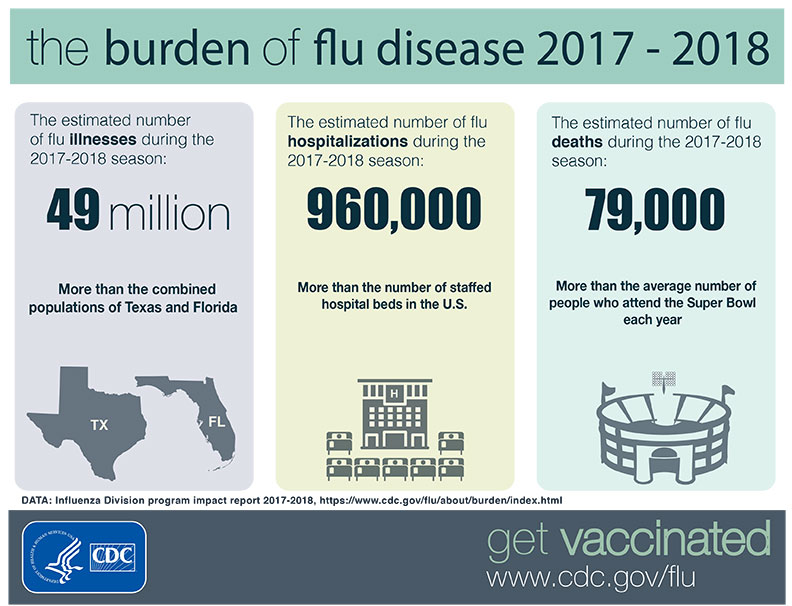 Since 2009’s pandemic, seasonal influenza is still prevalent, with an estimate of over 291,000-645,000 deaths from seasonal influenza worldwide. The highest mortality rates are in poorer, developing countries, with individuals at extremes of age being most vulnerable to death from seasonal influenza. We still do not have a universal influenza vaccine, though research is moving in that direction.
Since 2009’s pandemic, seasonal influenza is still prevalent, with an estimate of over 291,000-645,000 deaths from seasonal influenza worldwide. The highest mortality rates are in poorer, developing countries, with individuals at extremes of age being most vulnerable to death from seasonal influenza. We still do not have a universal influenza vaccine, though research is moving in that direction.
The 2017-2018 influenza season brought a serious influenza epidemic, with 48.8 million illnesses, 959,000 hospitalizations and 79,400 deaths estimated in the United States alone.
Recently, the Infectious Diseases Society of America (IDSA) released updated guidelines for diagnosis, and management of seasonal influenza. In the guidelines, they recommend testing for influenza in upper respiratory specimens of high risk patients, when testing can reduce unnecessary additional testing/inappropriate antibiotics, or when testing can influence chemoprophylaxis for high-risk household contacts. Vaccination is still recommended as the best way to mitigate the impact of seasonal influenza, but antiviral prophylaxis may be necessary in outbreaks or for certain at-risk populations.
More than 166.6Million influenza vaccines have been distributed in the US as of December 20, 2018. This year’s vaccine contains an influenza A H1N1pdm09-like strain, A H3N2-like, and influenza B strains from the Victoria and Yamagata lineages. Updated this year, the Advisory Committee on Immunization Practices (ACIP) also recommends the live-attenuated influenza vaccine (FluMist); however, the American Academy of Pediatrics suggests this only be used if the alternative would be no flu shot at all. The CDC can explain the types of vaccines available and who should get them.
Influenza
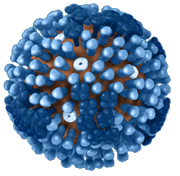 What it is: Influenza is a respiratory infection caused by a virus that can be easily spread from person to person by contact with respiratory droplets.
What it is: Influenza is a respiratory infection caused by a virus that can be easily spread from person to person by contact with respiratory droplets.
Who can get it: Anyone can get the flu, but the very young, very old, and those who are immunocompromised are at increased risk for getting the flu, or developing serious complications from the flu. The flu season usually goes from October to May but usually peaks between December and February.
How we can treat it: Symptomatic treatment is still the mainstay of management – fluids, rest, and over the counter medications targeting stuffy nose, body aches, fever, and sore throat. There are antiviral drugs available for treating influenza, but most people recover without needing antiviral treatment. People at highest risk for severe influenza or serious complications (such as infants, elderly or immunocompromised individuals) will benefit from antiviral treatment. Antibiotics are NOT used to treat influenza, although may be used to treat a serious bacterial pneumonia occurring as a complication of influenza.
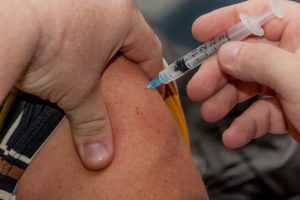 How we can prevent it: We can prevent the flu by getting the flu shot annually. The influenza vaccine may not always be a 100% match to all circulating strains, as we saw with last year’s flu season. It is true that even after getting the flu shot, a person may still develop the flu, but vaccination reduces the risk of influenza by 40-60%. Benefits of the vaccine include reducing illnesses from influenza, and preventing complications or dying from influenza.
How we can prevent it: We can prevent the flu by getting the flu shot annually. The influenza vaccine may not always be a 100% match to all circulating strains, as we saw with last year’s flu season. It is true that even after getting the flu shot, a person may still develop the flu, but vaccination reduces the risk of influenza by 40-60%. Benefits of the vaccine include reducing illnesses from influenza, and preventing complications or dying from influenza.
Other ways to prevent spread include hand hygiene, limiting contact with people who have influenza-like illness, and if you have such an illness yourself, STAY HOME.
Final thoughts about the flu
Regardless of which vaccine is more appropriate, our ancestors would probably encourage us to just get ANY vaccine if it would help avoid recreating the influenza pandemic of 1918. There’s still time – it’s not too late so if you haven’t gotten your flu shot, consider getting it today!
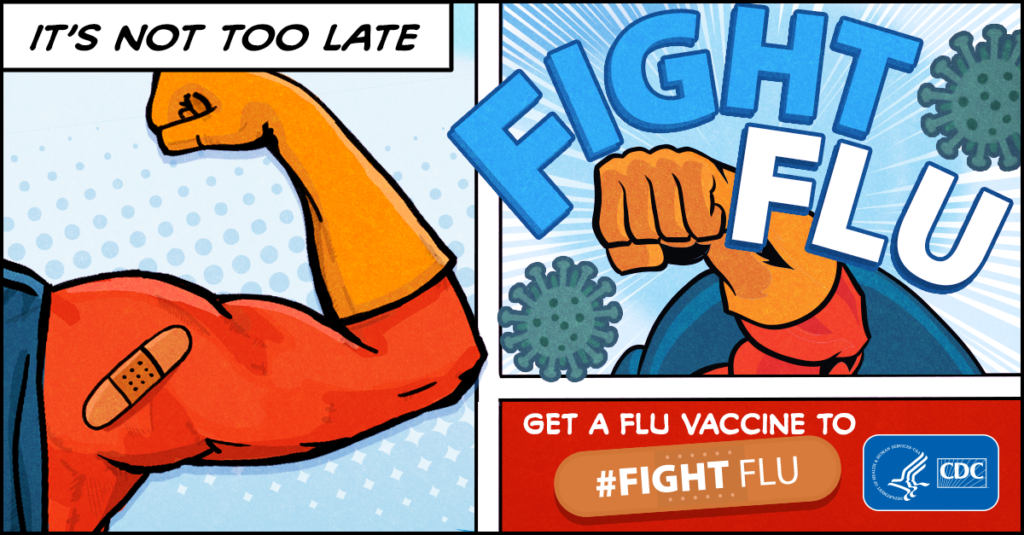
*Dr. Marcelin published a version of this article on the HAI Controversies blog on 12/20/18*
Pharm To Exam Table – Candida glabrata Urinary Tract Infections
The following is a clinical review written by Allison Graner, UNMC College of Pharmacy PharmD candidate 2019, and supervised by Scott Bergman PharmD FIDSA, Clinical Pharmacy Coordinator of Nebraska Medicine Antimicrobial Stewardship Program
What is the appropriate treatment for urinary tract infection caused by Candida glabrata?
Infections caused by the fungus known as Candida, the most common fungus to be cultured in the microbiology lab encompass many different species. Candida spp are part of the human natural flora, and just because they are detected in a sample does not mean they are pathogenic. The most common Candida species is Candida albicans, and this organism fortunately has very low resistance rates against antifungals. Candida glabrata, however, exhibits resistance around 30% of the time to azole antifungals.1 In many infections the inability to use a drug such as fluconazole does not pose a problem because another class of antifungals, the echinocandins, is a dependable group of medications that has strong fungicidal activity against Candida glabrata.2 However, candiduria is unlike most infections because most antifungal drugs do not reach the urine in high enough concentrations.
Candida in a urine sample does not always mean the patient needs to start therapy to eradicate the yeast. In an asymptomatic patient, this indicates colonization and does not need to be treated. In fact, treatment is not recommended unless the patient is neutropenic, will need urologic surgery, or is a very low-birth-weight infant, all of which meet criteria for high-risk patients.3 If Candida is present, it is suggested that the medical team look for causes of why this could be, as it is usually associated with catheter use, diabetes mellitus, or patients who are immunosuppressed. Regardless of the cause, if the candiduria is causing symptoms, spreading to other sites of the body, or the patient is clinically worsening, appropriate treatment is necessary.1,3
Azole Antifungals
Due to its high penetration into the urine, the number one drug for Candida-associated urinary tract infections (UTI) is fluconazole for 14 days.3 Treating candiduria with amphotericin B bladder irrigation used to be a more common therapeutic option, and there was originally concern for treating a localized infection with a systemic medication such as fluconazole. However, a randomized, double-blinded study concluded that fluconazole is at least as effective as amphotericin B irrigation, but less expensive and causes fewer side effects.4
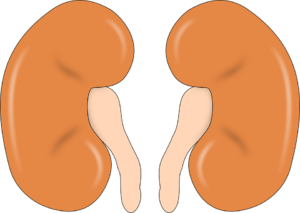 Fluconazole is 100% bioavailable when given intravenously or orally. It is also renally eliminated with almost 80% of the drug remaining unchanged upon excretion into the urine. When comparing concentrations in the plasma to that in the urine, urine levels exceed plasma by 10 times the amount.5 This means that lower doses could be used to achieve eradication of the infecting organism when it is in the urine. Fluconazole also penetrates the kidney tissue, making it even more optimal in cases of pyelonephritis.5
Fluconazole is 100% bioavailable when given intravenously or orally. It is also renally eliminated with almost 80% of the drug remaining unchanged upon excretion into the urine. When comparing concentrations in the plasma to that in the urine, urine levels exceed plasma by 10 times the amount.5 This means that lower doses could be used to achieve eradication of the infecting organism when it is in the urine. Fluconazole also penetrates the kidney tissue, making it even more optimal in cases of pyelonephritis.5
However, Candida glabrata exhibits fluconazole resistance rates up to 30%. Sometimes this can be overcome with the concept of susceptible but dose-dependent therapy, but other therapeutic options may need to be considered.1 In symptomatic candiduria caused by Candida glabrata, consider requesting susceptibility testing. The minimum inhibitory concentration (MIC) for C. glabrata to fluconazole can range from 0.25 to 256 μg/mL. The MIC should be noted because Candida glabrata exhibits dose-dependent susceptibility at concentrations <32 μg/mL.
In Candida glabrata urinary tract infections, always consider fluconazole as a first line option when MIC is <8 μg/mL. An oral dose of 200-400 mg per day would be adequate since urine drug concentrations are substantially higher than blood levels. Even with an MIC up to 64 ug/mL, fluconazole therapy should be considered because the urine concentration of the drug would result in levels >100 μg/mL, given its ability to easily penetrate the urine.1 With any MIC greater than this, the clinician should explore other therapeutic options since the minimum Inhibitory concentration would then exceed that of the amount of drug able to access the urine. Drug interactions need to be monitored, along with signs of hepatotoxicity and the QT interval of the patient. A different azole antifungal is not an option, as no other drug in this class has adequate distribution into the urine.1
Echinocandins
 Echinocandins are an acceptable alternative option, though they may not penetrate the urine at high levels. To date, 10 successful case studies have been published, 6 with caspofungin and 4 with micafungin, which have laid a foundation for the use of these medications in UTIs. The case reports with Micafungin used doses from 50 mg to 200 mg daily for 14 to 25 days, and all showed benefit. Micafungin has poor glomerular filtration and tubular secretion, however, a small percentage still makes its way into the urine as unchanged drug.6 In animal studies, micafungin was found to concentrate in the kidney tissue at 1.6 times the amount in the plasma, which could be beneficial in the case of pyelonephritis. Studies have shown that with a dose of micafungin 100 mg, the maximum plasma concentration averages almost 6 μg/mL. Even with only 1% of the drug reaching the urine, about 0.06 μg/mL of micafungin in the urine could exceed the MIC of Candida glabrata to micafungin, which is usually very low (MIC ≤ 0.015 to 0.5 μg/mL).6
Echinocandins are an acceptable alternative option, though they may not penetrate the urine at high levels. To date, 10 successful case studies have been published, 6 with caspofungin and 4 with micafungin, which have laid a foundation for the use of these medications in UTIs. The case reports with Micafungin used doses from 50 mg to 200 mg daily for 14 to 25 days, and all showed benefit. Micafungin has poor glomerular filtration and tubular secretion, however, a small percentage still makes its way into the urine as unchanged drug.6 In animal studies, micafungin was found to concentrate in the kidney tissue at 1.6 times the amount in the plasma, which could be beneficial in the case of pyelonephritis. Studies have shown that with a dose of micafungin 100 mg, the maximum plasma concentration averages almost 6 μg/mL. Even with only 1% of the drug reaching the urine, about 0.06 μg/mL of micafungin in the urine could exceed the MIC of Candida glabrata to micafungin, which is usually very low (MIC ≤ 0.015 to 0.5 μg/mL).6
Caspofungin data suggests effective use despite only 2-3% of active drug reaching the urine.8 However, data from a randomized double-blind trial proved micafungin was just as effective as caspofungin and had a similar side effect profile for invasive infections. Micafungin does not require a loading dose, is less expensive and therefore is preferred at most institutions.2 Micafungin is the most cost effective option, but in a setting where micafungin is unattainable, caspofungin would be an appropriate therapeutic option.
Other Antifungals
The Candida guidelines recommended using amphotericin B at 0.3–0.6 mg/kg daily for 1 to 7 days or flucytosine 25mg/kg 4 times daily for 7 to 10 days if unable to utilize fluconazole. For urinary tract infections, the amphotericin B deoxycholate formulation must be used as the liposomal product will not reach the urine in high enough concentrations. Amphotericin B deoxycholate is known for the intolerablility of its adverse events.9 For UTIs caused by Candida, it is also used to directly irrigate the bladder. This method is effective in up to 90% of patients, but long term efficacy has not been proven, as many patients have recurrent candiduria within weeks.3 If not for its side effects and cost, flucytosine would be a great option as 97% is excreted as unchanged drug into the urine, and it has low resistance rates against most Candida species.3,5 However, resistance can develop when using flucytosine alone for more than a few days. In severe infections it is often paired with amphotericin B to prevent the resistance from developing.3
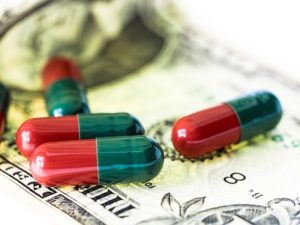 With the already mentioned therapeutic options being readily available, these agents are only used in refractory cases in the United States because of their cost and toxicities. Flucytosine was developed as a chemotherapy agent, and can predictably cause side effects such as bone marrow suppression, hepatotoxicity, gastrointestinal problems, rash, and diarrhea.1 After a recent price hike in the US, using flucytosine would cost around $1400 per day.10 Amphotericin B also has a long list of adverse events such as renal toxicity, electrolyte abnormalities, hypotension, chills, headaches, etc., and can cost anywhere from $90 to $160 per day.9
With the already mentioned therapeutic options being readily available, these agents are only used in refractory cases in the United States because of their cost and toxicities. Flucytosine was developed as a chemotherapy agent, and can predictably cause side effects such as bone marrow suppression, hepatotoxicity, gastrointestinal problems, rash, and diarrhea.1 After a recent price hike in the US, using flucytosine would cost around $1400 per day.10 Amphotericin B also has a long list of adverse events such as renal toxicity, electrolyte abnormalities, hypotension, chills, headaches, etc., and can cost anywhere from $90 to $160 per day.9
Conclusion:
Fluconazole has established efficacy for its use in candiduria, and if following susceptibility testing the Candida species is susceptible (or dose dependent), fluconazole for 14 days should be considered the number one therapeutic option. If the organism is resistant or fluconazole is not an option, consider antifungals from the echinocandin class, as more case reports are demonstrating efficacy despite minimal urine penetration. If all of the above options are unavailable, one could then consider therapy with amphotericin B or flucytosine knowing that more toxicities are probable and the expense will be higher.
References:
- Fisher JF, Sobel JD, Kauffman CA, et al. Candida Urinary Tract Infections – Treatment. Clinical Infectious Diseases. 2011;52(S6):S457-S466.
- Pappas PG, Rotstein CMF, Betts RF, et al. Micafungin versus Caspofungin for Treatment of Candidemia and Other Forms of Invasive Candidiasis. Clinical Infectious Diseases. 2007;45:883-893.
- Pappas PG, Kauffman CA, Andes DR, et al. Clinical Practice Guideline for the Management of Candidiasis: 2016 Update by the Infectious Diseases Society of America. Clinical Infectious Diseases. 2015 November:1-50.
- Sobel JD, Kauffman CA, McKinsey D, et al. Candiduria: A Randomized, Double-Blind Study of Treatment with Fluconazole and Placebo. Clinical Infectious Diseases. 2000;30:19-24.
- Felton T, Troke PF, Hope WW. Tissue Penetration of Antifungal Agents. Clinical Microbiology Reviews. 2014; 27:68-88.
- Pieralli F, Bazzini C, Vannucchi V, et al. A case of candida glabrata severe urinary sepsis successfully treated with micafungin. Medical Mycology Case Reports. 2015;5:1-3.
- Fisher JF, Woeltje K, Espinel-Ingroff A, et al. Efficacy of a single intravenous dose of amphotericin B for Candida urinary tract infections: further favorable experience. Clinical Microbiology Infections. 2003;9:1024-1027.
- Sobel JD, Bradshaw SK, Lipka CJ, et al. Caspofungin in the Treatment of Symptomatic Candiduria. Clinical Infectious Diseases. 2007;44:e46-e49.
- Drew R. (2018). Pharmacology of amphotericin B. Retrieved September 14, 2018, from https://www-uptodate-com.library1.unmc.edu/contents/pharmacology-of-amphotericin-b
- Drew RH, Perfect JR (2018). Pharmacology of flucytosine. Retrieved September 14, 2018.
Featured image from CDC: https://www.cdc.gov/fungal/antifungal-resistance.html
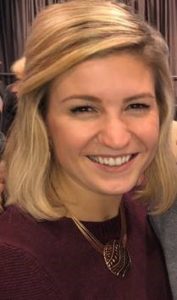
Allison Graner, UNMC College of Pharmacy PharmD candidate 2019
Bacteriocidal versus Bacteriostatic: What Makes the Biggest Difference in VRE Bloodstream Infection?
An October 2018 publication in Critical Care Medicine by Chuang et al details a prospective study of adults in Taiwan, between 2010 -2015, aimed to assess all-cause mortality and rate of bloodstream clearance among patients with vancomycin-resistant enterococci (VRE) treated with daptomycin (bacteriocidal) versus linezolid(bacteriostatic). Patients were treated with conventional daptomycin (6 to < 9 mg/kg actual body weight), high-dose daptomycin(>9 mg/kg) or linezolid (600mg IV Q12 hours). The initial blood culture bacterial load was determined, followed by blood cultures daily for the first 4 days and then twice per week for a total of 2 weeks unless the patient was discharged or therapy discontinued prior to that. Blood cultures were assessed via traditional blood culture methodology and by a real-time quantitative PCR detecting vanA (no vanB documented in cohort).
108 patients were included in the analysis. 63(58.3%) received conventional dose daptomycin, 15 (13.9%) received high-dose daptomycin and 30(27.8%) received linezolid. There was no statistically significant difference between survivors and non-survivors in the initial bacterial load, however, survivors had a statistically significant higher rate of early bacterial clearance (p = 0.02). There was no statistically significant difference in bacterial clearance among those with empiric versus definitive treatment, however clearance was statistically significant in difference among the antimicrobial treatment arms. Early bacterial clearance was faster with high-dose daptomycin(p<0.001) and linezolid(p =0.043) as compared to conventional daptomycin, with no statistically significant difference between high-dose daptomycin and linezolid. A higher PITT bacteremia score and slower clearance of bacteremia were found to be independent predictors of mortality. PCR was more sensitive, and equally as specific, as traditional blood cultures.
The statistically significant differences in rate of bacterial clearance (and associated survivorship) between high-dose daptomycin and linezolid, compared to conventional daptomycin, suggests that higher doses of daptomycin or use of linezolid should be considered in VRE BSIs. Larger studies are needed to validate the results and validated determine clinical impact and optimal dosing.
Of note, the study is limited by smaller sample sizes, no vanB carrying VRE and the inability to report false positive PCRs. A formal RCT would be needed to determine optimal therapy. In addition, the average weight of patients was 60 kg, thus this data cannot be extrapolated necessarily to obese patients. Further studies related to dosing weight and optimal dosing are also warranted.
Content originally written and adapted for the IDSA journal club.
Saving SIRS? Discernment of Sepsis from Non-Infectious Syndromes in the ED
Upon patients’ arrival to the emergency department (ED), determining whether they do or do not have sepsis is difficult. Because of this, many patients receiving antibiotics ultimately are found to have a noninfectious cause of their syndrome. In order to try and improve detection of sepsis in the ED, Mearelli et al. completed a multicenter prospective study at five university hospitals in Italy and reported their results in a recent article in Critical Care Medicine.
The study included two cohorts: an inception cohort for the development of a predicted algorithm and a validation cohort to determine positive and negative predictive value of the algorithm based on pretest probability of infection with the aim to differentiate sepsis syndromes from noninfectious inflammatory states. Despite its faults, criteria for systemic inflammatory response syndrome (SIRS) were used to enroll patients and then categorize them based on whether an infectious diagnosis was ultimately identified. Biomarkers utilized in the algorithm included procalcitonin, soluble phospholipase A2 group IIA (sPLA2GIIA), presepsin, soluble interleukin-2 receptor α (sCD24), and soluble triggering receptor expressed on myeloid cells (sTREM-1).
The area under the curve (AUC) for the algorithm in the validation cohort was an impressive 0.95 (95 percent confidence interval [CI] 0.82-0.90). The primary impact of this study may be for ruling out sepsis and septic shock given that only five of 700 (0.7 percent) patients were misclassified when having sepsis or septic shock compared to the usual approach of clinical concern for infection, fever, leukocytosis, and increased C-reactive protein.
Although imperfect, the algorithm does appear to be better than current diagnostics used for determining if a patient has sepsis or septic shock. Primary concerns for future implementation of this are the few patients that had sepsis or septic shock with a negative SIRS screen, the feasibility of rapid multimodal test results for screening versus potential delay of therapy, and the overall cost of obtaining such labs.
(Mearelli et al. Crit Care Med. 2018;46(9):1421-1429.)
Content written by Dr. Kelly Cawcutt; originally posted for the IDSA journal club.
Recent Posts
- Fast, Accurate, and Practical: Rapid AST for Gram-Negative Bacteremia
- 2025 Reflections From ID Chief – Dr. Warren
- Year-End Accolades! – We are so PROUD of our people!
- Understanding Health Misinformation: Why It Spreads, Who It Harms, and What We Can Do About It
- UNMC ID Transplant Infectious Diseases Research Group Leads in Division Clinical Trials
Archives
- January 2026
- December 2025
- November 2025
- October 2025
- August 2025
- July 2025
- May 2025
- April 2025
- March 2025
- February 2025
- January 2025
- December 2024
- November 2024
- October 2024
- September 2024
- August 2024
- July 2024
- June 2024
- May 2024
- April 2024
- March 2024
- February 2024
- January 2024
- December 2023
- November 2023
- October 2023
- September 2023
- August 2023
- July 2023
- June 2023
- May 2023
- April 2023
- March 2023
- February 2023
- January 2023
- December 2022
- November 2022
- October 2022
- September 2022
- August 2022
- July 2022
- June 2022
- May 2022
- April 2022
- March 2022
- February 2022
- January 2022
- December 2021
- November 2021
- October 2021
- September 2021
- August 2021
- July 2021
- June 2021
- May 2021
- April 2021
- March 2021
- January 2021
- December 2020
- October 2020
- September 2020
- August 2020
- July 2020
- June 2020
- May 2020
- April 2020
- March 2020
- February 2020
- January 2020
- December 2019
- November 2019
- October 2019
- September 2019
- August 2019
- July 2019
- June 2019
- May 2019
- April 2019
- March 2019
- February 2019
- January 2019
- December 2018
- November 2018
- October 2018
- September 2018
- August 2018
- July 2018
- June 2018
- May 2018
- April 2018
- March 2018
- February 2018
- January 2018
- December 2017
- November 2017
- October 2017
- September 2017
- August 2017
- July 2017
- June 2017
- May 2017
- April 2017
- March 2017
- February 2017
Categories
- Antibiotic Awareness Week
- Antimicrobial Stewardship
- Bench to Bedside
- Conferences and Presentations
- COVID-19
- Faculty and Staff
- Faculty Recruitment
- Fun With ID
- Guest blog posts
- HIV
- HIV/AIDS
- ICAP
- ID Grand Rounds Speakers
- ID History
- ID Pharmacy
- IDIG
- IDSA
- IDWeek
- In the News
- Infection Prevention and Control
- Journal Club
- Medical Education
- Micro
- Microbe Monday
- NBU
- Nebraska ASAP
- Nebraska ID Society
- Nebraska Medicine ASP
- Oncology ID
- Ortho ID
- Pediatric ID
- PharmToExamTable
- Publication Alert
- Research
- Transplant ID
- Uncategorized
- UNMC ASP
- UNMC Enhanced Medical Education Track
- UNMC ID Achievements
- UNMC ID Fellowship
- UNMC SCC
- UNMCID GIVES BACK
- Weekly Corona
- Why I Love ID
Recent Comments